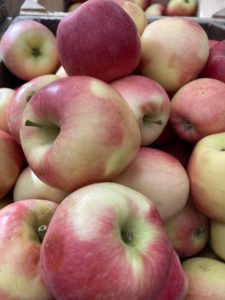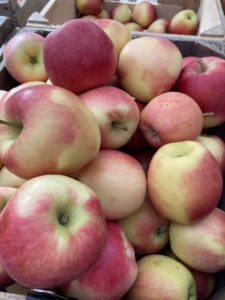
Ambrosia is the ancient Greek and Roman mythological term for “food of the gods.” In modern vernacular, it refers to something very pleasing or delicious.
So when I discovered ambrosia apples at my local farmers market, I was a bit skeptical. Now, let me be clear. Locally grown in-season apples of most any variety are pretty divine, so I am not sure that I would put ambrosia applies well ahead of its cousin varieties. But they certainly do have some features that make them special.
They store quite well if refrigerated but will lose texture rapidly if left out. The flavor is sweet with low acidity, making this variety excellent for snacking and also good for baking. The skin is not thick or tough, so even in pies, many bakers skip paring ambrosia apples. Another benefit of ambrosia apples is that they take longer to turn brown after being cut, so they are ideal for use when prep and serving involve a wait.
Ambrosia apples are in season around here from early to mid-fall. They are a fairly new varietal, having been cultivated in British Columbia in the early 1990s.
 Many recipes extol the virtues of ambrosia apples for baking: tarts, pies, turnovers, crisps, cobblers, crumbles and cakes. And I am certainly not going to argue with the multitude of enthusiasts who integrate this varietal into their desserts. But for my money, these shine most when served raw, either as a straight-up snack or in one of the following ways:
Many recipes extol the virtues of ambrosia apples for baking: tarts, pies, turnovers, crisps, cobblers, crumbles and cakes. And I am certainly not going to argue with the multitude of enthusiasts who integrate this varietal into their desserts. But for my money, these shine most when served raw, either as a straight-up snack or in one of the following ways:
- Ambrosia apples on a cheeseboard with sharp aged cheddar, a drizzle of local honey and a wedge of crusty sourdough bread
- Ambrosia apples grated and stirred into oatmeal with Greek yogurt
- Ambrosia apples tossed over a spinach salad with pickled onions, candied pecans, crumbled blue cheese and mustard-vinaigrette dressing
- Ambrosia apples sliced and mixed with melon, grapes, orange segments, berries and slivered almonds



